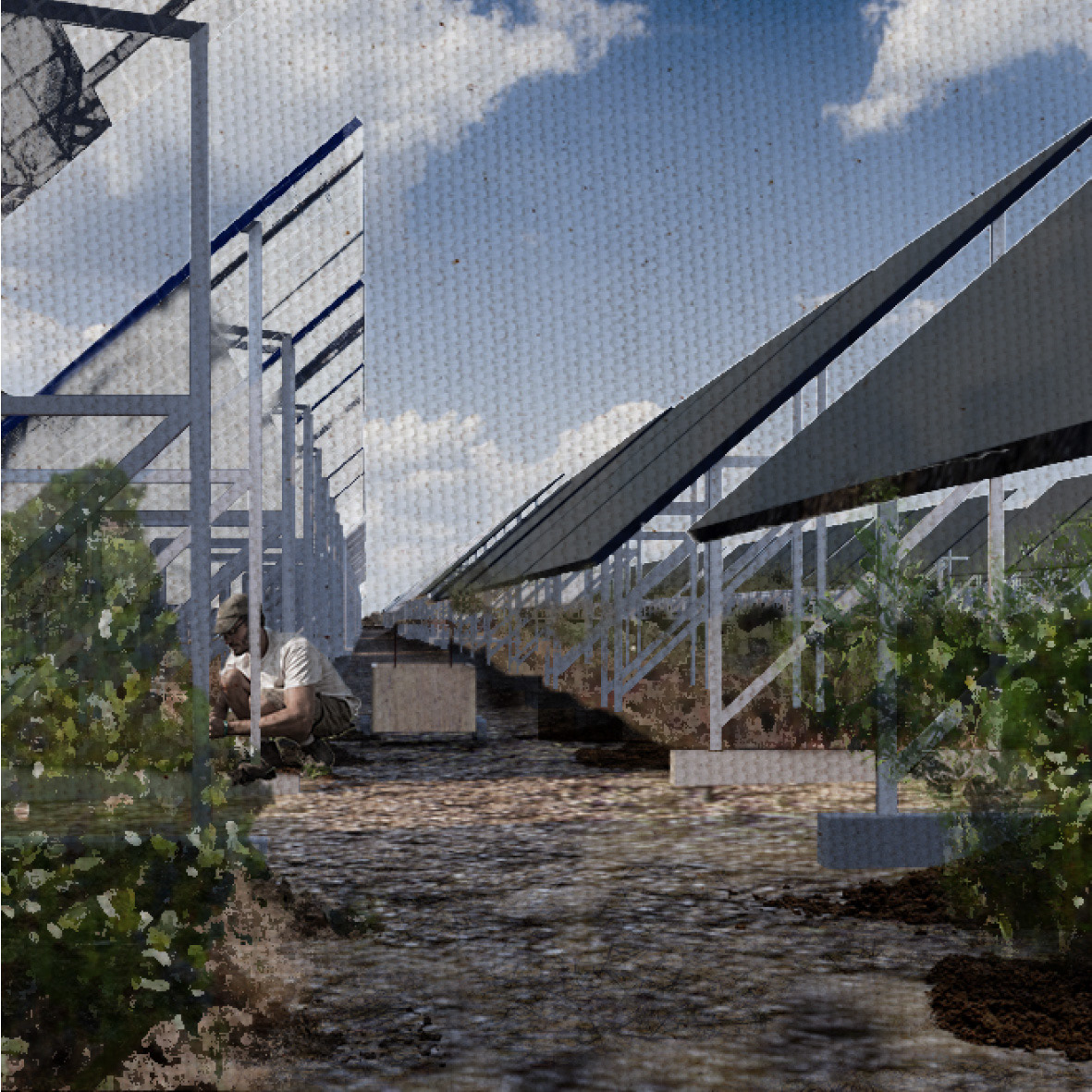Localizing Food and Energy for the Future
An agrisolar farm and community restaurant improve the food and energy sovereignty of Lynn, Saugus and Revere. The agrisolar project, sited on the old landfill, dramatically reduces food travel distance while supporting the Massachusetts energy transition. Its high elevation ensures safety from flooding for perennial crops and livestock. The solar panels, owned by the new local energy coop, power 2500 homes while shading the plants. After on-site processing, crops are donated to vulnerable people, delivered to local restaurants, and sold at local markets. A new pier enables easy access by boat as sea level rise progresses.
An agrisolar farm and community restaurant improve the food and energy sovereignty of Lynn, Saugus and Revere. The agrisolar project, sited on the old landfill, dramatically reduces food travel distance while supporting the Massachusetts energy transition. Its high elevation ensures safety from flooding for perennial crops and livestock. The solar panels, owned by the new local energy coop, power 2500 homes while shading the plants. After on-site processing, crops are donated to vulnerable people, delivered to local restaurants, and sold at local markets. A new pier enables easy access by boat as sea level rise progresses.
Food sovereignty is not just about access, but about knowledge. The multiuse community kitchen connects the farm to the community with educational programming for students and adults, using food from the farm. The two sites are literally connected with a boardwalk that traces the path of the cable powering the restaurant. Entrepreneurs in the MA Food Ventures Grant Program use the space as a popup business, and at other times community members gather there to cook together. The kitchen is built on stilts with a pier overhanging a daylighted stream. As the water rises, the restaurant is serviced by boat, replacing the flooded road.

The new agrivoltaics site is divided into six areas according to soil type and sun exposure. Half the area will be for acidic soil-loving plants, and the other half neutral. Each of these halves will have one section with full shade, provided by a dense grid of solar panels; one part with half-shade; and one part on the steeper north-facing slopes with no shade. A series of roads provide vehicles with access to the fields to transport fertilizer, food, and people around. There are small rest areas with shelter spaced out at retular intervals.
There are also trails for tourists. One trail leads up the slope to the top of the landform, providing a view of the marsh. Around the base of the agrivoltaics site, there will be another trail that is much more flat, winding through a planted area with trees, shrubs, grasses and forbs, depending on elevation and proximity to the marsh.
A boardwalk crosses over the road and through the marsh to connect with the community restaurant, following the path of the buried power cable.
The panels are laid out to ensure easy access to every planting bed with a handcart, and access to a vehicle at convenient intervals. The site is terraced to give a sense of scale, so it is always possible to see the next terrace and understand where you are. A meter of soil lies above the impermeable cap of the landfill, preventing any contamination. The plants are all perennials, reducing the need for any ploughing that might threaten the impermeable cap. I have chosen each group of plants for their suitability to the light and soil conditions of the different areas on the agrivoltaics site.
The community restuarant is a hybrid space where people can gather around food. There are cooking classes, pop-up restaurant events, and family gatherings here all year round. Trucks, and later as the sea level rises, boats, transport produce from the agrivoltaics farm to the community restaurant.
It is built on a hill, terraced to mirror the much larger agrivoltiacs site. On the edge of each terrace is a long bench, allowing visual connection between the kitchen and the neighborhoods around it. Between benches, the space is flexible. There are places to grow herbs and vegetables, and places to test out plants for use on the larger site, as well as pollinator-friendly meadows.